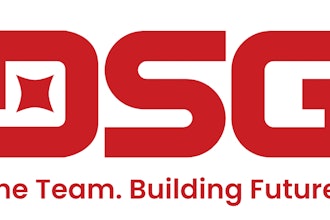How long have you been trying to find a way to improve the processes that you use to operate your company or organization? How long have you been trying to eliminate the non-value added work, which wastes time and productivity? How many times have you “fixed” a problem or process only to slip back and need to “fix” it again, and how often do your employees end the workday knowing they spent too much time fixing mistakes or redoing work? It’s sometimes difficult to take a step back and systematically solve a problem or understand the root cause of an inefficient process, but often that is exactly what’s needed to achieve consistent process improvement.
Webinar: The Industrial Distributor of the Future
The answer for us — and likely for you as well — is a methodology that uses a collaborative team effort to systematically remove waste and defects, called Lean 6σ (Sigma). This methodology can deliver significant improvements and concurrently change the culture to become more analytical. It is an approach to problem solving that is consistent and data driven. When applied correctly, it can help you do anything from saving time on manual labor to eliminating unnecessary inventory, improving the quality of work life for your employees and building a competitive advantage in the market place. One of the key goals of lean 6σ is reducing process variation, which leads to improved customer service. Consistently meeting or exceeding your customers’ expectations is the surest way to keep your customer. Over the past two years, since implementing Lean 6σ, our customer retention has improved dramatically.
At Lawson, we used to rely on anecdotal information and trial and error to make changes. We have come to believe that trial and error is mostly “error.” Often times we would use information based on a gut feeling or observations that we had made over time. This had the effect of placing too much weight on outlying symptoms… we often solved the wrong problem. However, Lean 6σ requires that you systematically dissect a problem into its component parts starting with an exercise to map and document the critical processes that operate your enterprise. Activities such as writing a complete and proper “problem statement” begin to focus the group on gathering data and developing an understanding of “root cause.” There is an expression “go slow to go fast”; Lean 6σ feels that way.
Lean 6σ is something we brought to the company when I started as CEO in 2012. Having spent 18 years at General Electric (GE), which successfully utilizes Lean 6σ in all operations, I knew the importance of the methodology and could clearly see the positive impact it would have for us at Lawson. Lean 6σ was first implemented at GE in the early 1990s due to its systematic way of eliminating waste and improving overall performance. It is based on the combination of lean manufacturing philosophy. With 6σ, which refers to the number of “defects per million operations.” It is also the application of principals developed by the pioneers of quality and continuous improvement: W. Edwards Deming, Joseph Juran, Philip Crosby and Kaoru Ishikawa. In practice, Lean 6σ is focused on process optimization, reducing variation, cycle time reduction and removing non-value added work rather than “fixing a process.” Ultimately, you can analyze any process by considering two critical elements:
- Effectiveness: How well do we meet or exceed our customer’s expectations?
- Efficiency: How well do we use our resources to do that?
This means many things in our business. When we first began implementing Lean 6σ in early 2013, we decided to do it in waves, introducing the methodology slowly to groups and teams across all areas of the company. We engaged a small specialized, consulting firm, Eckes and Associates that I had worked with in 1993 at GE plastics. They initially guided us through the strategic component of 6σ, which advocates managing processes, not outputs. The first step was to develop a high-level process map of the company. We mapped seven primary process and 41 sub-processes. One of the first eye-opening realizations was that many of the activities at the sub-process level were comprised primarily of “re-work.” Some major breakthroughs were apparent right from the beginning. For example, we were able to free up $40,000 to $50,000 in wasted expenditures by working with our suppliers on better timelines that led to a comprehensive supplier report card. We work alongside our suppliers to improve on-time delivery, reducing the number of back orders by 80 percent, and improving the complete order fill rate (single shipment) by 60 percent. Through another exercise we were able to cut the time it takes to recruit a new sales rep in half, and in another we cut the time it takes to get a price and delivery quote to a customer for a product that may not currently be in our catalog from 3.5 days to just one. As Lean 6σ became more pervasive beyond the initial project teams, a group of IT people working with the mailroom identified an enormous waste of paper in the way we previously utilized an invoice sheet. Small tweaks on how we invoice our clients are now saving us 750,000 pages and $50,000 a year in paper and mailing costs.
Following the success of the first wave, we began to see an interesting trend evolve. Employees across the company were putting in requests to participate in the upcoming waves of Lean 6σ training. One of the secondary benefits of the training and cross-functional process work enabled our employees to interact with one another in a way they were never able to before, and the results empowered them to improve their work processes. We made sure to include employees from all areas of the company, including field sales and the distribution centers, with the hopes that they would implement their new education in each department, sharing their training with one another. We also wanted to create a cross-functional and holistic understanding in our teammates, since an accountant and a sales rep likely have different ideas on problem solving. The result was outstanding and we are reducing waste on all fronts of the business.
At the present time, we are wrapping up the second wave of implementation and will begin the third later this year in October. Our goal is to develop a culture based on operational excellence, systematic process improvement and a fulfilled, engaged work force. At the moment we have over 70 employees trained. By year’s end more than 100 of our employees will be trained in the methodology. The lean 6σ methodology combined with an empowered work force is leading to improved customer service.
At its core, Lean 6σ is a commitment to ongoing process management, systematic process improvement, and culture change. It needs to start at to the top of the enterprise. Senior leaders need to lead by example. The short and long-term benefits warrant the time and energy required to embrace this methodology.
Michael DeCata is President and Chief Executive Officer of Lawson Products, which was No. 37 on Industrial Distribution's 2014 Big 50 List.























